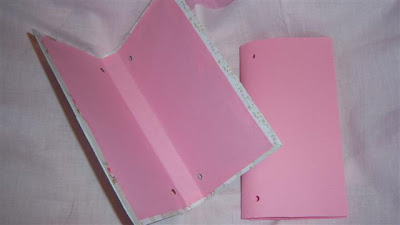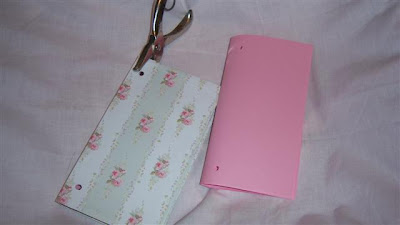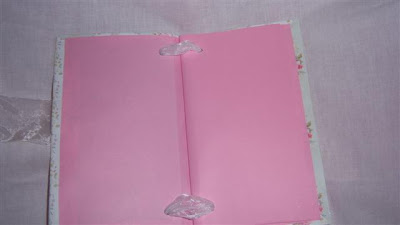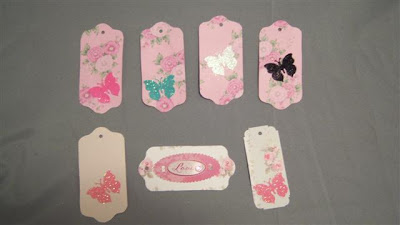Since there are sometimes objections from friends regarding a woman's desire to be a full time home maker, I thought I would address one way to deal with it. There are many things that can be done to calm the concerns of onlookers and outsiders, and even insiders, but I will address just one of them now.
If a woman could trace how the conversations with friends and relatives seem so often to focus on their objections to her staying home, she could possibly solve most of the problem. If she would rehearse in her memory the last exchange she had with people who are urging her to leave home and join the herd in the workplace, she might be able to see how to prevent people focusing on this and bringing worry and stress into her life.
One thing that almost always puts a stop to the pressure from other folks is to avoid anything that can be perceived as complaining or expressing a feeling of being deprived of anything.
Do not say things like, "I was grocery shopping today and I did not buy the _________because I could not afford it." Automatically, some people's solutions will be "You should get a job." Instead, say, I decided I wanted a different menu."
Do not say "It is hard when you only have one income." Who said you should have two incomes, and where is it written that the wife should work outside the home? Instead say, "I am enjoying learning how to look after our income and shop more wisely." Develop a habit of always portraying things in a good light. Give a good report about your stay-at-home status.
Avoid saying things about being alone all day or having no money to go out, or only having one car, even if it is not a complaint, because "they" will take it that way. "They" may be tuned in to any little thing you say that makes homemaking seem disadvantageous to you. Put a different spin on the entire thing.
Say things like, "I really don't miss paying for tags, insurance, repairs, and licences for two vehicles. I do not think I ever want to go back to those days." You could also say, "I appreciate having the time to really concentrate on taking care of things for my husband. If you do have a car, you can cite the many times he has called and you were able to do something for him that he needed done while at work: the banking, paying bills, getting clothes ready for the next day, and so forth.
If "they" seem to want to dwell on the subject of your staying home vs. going to work each and every time they visit with you, one of my own tactics for dealing with telemarketers might work: "You called me two days ago and if you remember, we discussed this, and it was decided that I was not going to buy this product, and furthermore, we determined that it would not be necessary for you to call me about this again. I will let you know if I change my mind. "
There are two ways of dealing with the persistent people who feel obligated to tell you that you will be better off to get a job. One way is to tolerate it, and another way is to exercise patience.
Tolerance is not the same as patience. When someone continually brings up a subject and you put up with it, ignore it, and try to be polite, hoping that they will come to a better understanding on their own, you are tolerating it.
Toleration does not benefit them very much and it does not help you show a good example to them. One way to understand this is in bringing up children. If you tolerate a behavior, it goes uncorrected. Toleration is an attempt to ease the discomfort on your part and avoid further disruption on their part. However, this does not actually work as effectively as patience does.
Patience is a more Biblical and sensible approach to handling people who want to discuss a matter that will unsettle you. Patience is a consistency of action with the goal of achieving a result. Patience with children means that when you are teaching them to look after themselves, you say the same thing, firmly, each time, and then show them how to do it. You will remind them when they forget, knowing that one day the training will take hold, and they will remember.
When you patiently strive forward to make progress with your home and your life each day, others will see it and eventually keep quiet about their opinion of you. When you remind them that you have had this conversation with them before, and you reached the conclusion that it was the right season for you to stay home, they will be less likely to pursue it.
Another issue that people seem to want you to deal with is one of personal fulfillment. "They" worry that you are depriving yourself of some advancement in education or career. They will remind you that you are getting further behind and will not be able to catch up when you decide to go to work. This is not proven, as so many industries and needs change each year, that it is probable that the kind of employment available today will not even exist tomorrow. If you do not want to get involved in this conversation, first assure them that you are personally fulfilled and happy to help your husband by looking after him. List the number of things you do for him each day and show how much stress and time and money it saves him.
Then, learn to change the subject onto something greater than yourself and your own activities. Make a list of the great variety of things there are to talk about and learn to change the conversation by taking something in a remark and using it as a vehicle to another conversation. For example, if someone says that you are just vegetating at home, say "Speaking of vegetables, do you know where I can find a good bargain on broccoli?"
If someone says you need to bring in an extra income to "help" your husband, say, "That reminds me: I am looking for some traffic to my Etsy shop, where I am getting a little extra income. I'll email you the address and maybe you can show your friends," or "I'm trying to look after our income so that there is not so much going out, and would welcome any coupons you could give me."
These are just two examples of how to take a word out of a sentence and turn it into another subject. It should be used only when the subject matter is focusing too much on you, and causing inner turmoil. Knowing how to use it can save you a lot of problems.
With the world the way it is today, it may take some people years to finally come to the conclusion that you are trying to do things in a more natural way, and that you are a homemaker because of your beliefs. If you really have a strong conviction about being home, other people's remarks, though disturbing, will not be intimidating enough to make you give it all up and join the hunt with the men. For the most part, though, your attitude is what will determine whether other people consistently focus on the subject, or not.
Guarding your words and choosing the right things to say to lead people's minds in the right direction, goes a long way to preventing people from taking up a subject and running with it.
Other ways that could be considered are:
Having a blog that shows what you are doing -- it gives people a chance to see how important this is to you. Include lots of other homemaking links for your doubters to look up.
Having a tea for the ones who just dont get it. They will remember it as one of the nicest times they ever had.
Engage in a work that is important to you, from crochet to crafting to whatever you like., so that you will have something to show for any spare time you can get. Give your hand work as gifts. Eventually people will come back and say, "Could you make one of those for my (aunt, sister, etc)? I will give you the money for materials."
Very few women at work have time to do the things they really would like to do, and they will be glad to know someone who is available to do some of these things. This is a typical reaction of people who at first could not understand why women stay home. Eventually, if you are patient, they will understand. Patience means to keep on the road you are going and not divert from it. It means you are teaching a lesson as you go.
Jan 17---added note:
This was mainly written to young people to caution them not to reveal or "tell all" to people when it is none of their business. I used to have a sticky-beak come around my house regularly and inquire about every little thing. "Are you really happy?" "Do you get tired?" "Does your husband let you have a checkbook?" "Why is that one bedroom all messed up?" "Can't you get a job?" She had the knack of figuring out whether I was dealing with a leak in the roof or a squeaky door, or maybe had been on a trip and had a mountain of laundry, and would always say, "If you had a job, you could have someone come in and fix that!" It is best not to confide in people like this. Learn who is your friend and who will give you the best counsel.
If you get tired of the pressure from others, to leave your home and go to work, then eliminate the problem by being careful what you talk about. The woman who came often to give me advice, no longer even has a home. She did not like housework, and did not like sewing or cooking or knitting, but thought since she did not like it, no one else would like it either. She did not enjoy being a homemaker, and thought it was punishment for others to have to be homemakers.
These kinds of beliefs make it bad for them to be advisors, and that is why I say it is good if you surround yourself with the kind of talk that will reinforce your decision to be at home. Eventually you become stronger and able to deal with objections. It is the same as growing up: we do not expose babies to every thing, until they are strong enough to deal with it. Life is a process of maturing and growing up, and there is a time and season for everything.
I think young women should be left to really enjoy their homes and get into cooking and sewing or knitting, or whatever they love and are absorbed with, without too much turmoil. That is why I suggested, in this post, (which was a requested subject), that they eliminate most of the conflict by being careful what they say which will bring more arguing into their lives. I've shown a couple of ways to do it. Everyone of course, can do as they like, and I'm not establishing policy here, just some ideas to work with. If a woman has lots of friends and loves telling them everything, and does not mind if they offer objections or run her down for staying home, then she should not change her conversation habits.
I just want to add one example of how to say the wrong thing that will cause more trouble in your life, from real life experience.
My father in law was an evangelist and preacher. He was 94 when he died, and he had no refinement about what to say, which was actually quite good in some cases, but in others, it was not. One time a woman called him and asked him to visit her husband in prison. He was not a Christian, and she had become a Christian quite a few years after she married him. He was in prison because he had stabbed someone with a knife. When my father in law visited him, he asked him, "What kind of knife did you use?" Of course, he did not get a kind response, from the man who wasn't too interested in talking with a preacher in the first place. He had introduced a sore subject. We have to learn to avoid sore subjects at certain times and learn who we can talk to about certain things.
I am commenting on this because of some misunderstanding that I apparently am advising people to lie, or something. I'm not doing that at all. Just because you don't confess every little thing to all your friends and relatives, does not mean you are lying or hiding something.
It is a matter of preserving personal dignity and privacy. It is a matter of guarding the tongue and capturing the thoughts before they roll off the tongue, because they are not appropriate and will set off a reaction in the other person. When girls are young, this needs to be taught, because although we have nothing to hide, we are careful what we say to people who will argue back with us....unless of course, you want to spend the time responding to them.
It is up to the individual, but even those women who have to work outside the home, are given advice about innappropriate things to talk about in the workplace. Would this advice about not talking about their latest illness or their financial condition (debt, purchases, etc) be called "lying?" Would it be called "trying to make things look good when they are not?" No, it is termed "Too Much Information." In the old days, there were certain subjects that were considered personal, and we did not ask about them. No one knew how much a woman weighed, how much money her husband made, how much they spent, or what they had written in a personal letter. No one asked how old you were unless you were a little child. People did not talk about every thing they did or were doing. They knew that sometimes it could cause a worse problem.
I doubt that anyone would think that not talking about personal things at work would be dishonest or lying, yet today there is a column online that suggests there are 13 subjects that should not be discussed at work, if you are new at the job. I am only saying here that if you are new at full time homemaking, there are some things that you would be better off not discussing until you get more established, and more confident.

.jpg)


 Cupcake card made with pleated crepe paper streamer on the base. Click on for detailed view.
Cupcake card made with pleated crepe paper streamer on the base. Click on for detailed view. One of my hostesses in Alaska gave me this fuel box from the 1950's. We used these in the early days of homesteading, for the upper cabinets. Women would take calico flour sacking and make curtains for them. Thanks to Carol for this wonderful gift! I am going to make a cupboard with it, but for now, it makes a nice display box for my cupcakes.
One of my hostesses in Alaska gave me this fuel box from the 1950's. We used these in the early days of homesteading, for the upper cabinets. Women would take calico flour sacking and make curtains for them. Thanks to Carol for this wonderful gift! I am going to make a cupboard with it, but for now, it makes a nice display box for my cupcakes..jpg)
 Click on for a larger view.
Click on for a larger view..jpg)
.jpg) These are hearts with a special glittered edge that looks like tinsel or rick-rack. It is a more advanced paper project, but there is an easy one at the end.
These are hearts with a special glittered edge that looks like tinsel or rick-rack. It is a more advanced paper project, but there is an easy one at the end..jpg) Draw half heart shapes on the folds of used paper, junk mail, construction paper, etc. for your patterns. Make several of them, open them up, and pick the ones you like the best for your pattern. You can stop, at this point, and just cut out colored hearts from construction paper, and use them for cards or decorations. We have used different sized pink and white hearts, made by children, to scatter on luncheon tables, as "confetti," with a little glitter on each heart.
Draw half heart shapes on the folds of used paper, junk mail, construction paper, etc. for your patterns. Make several of them, open them up, and pick the ones you like the best for your pattern. You can stop, at this point, and just cut out colored hearts from construction paper, and use them for cards or decorations. We have used different sized pink and white hearts, made by children, to scatter on luncheon tables, as "confetti," with a little glitter on each heart..jpg) Pick the best ones for your templates. Practice making them until you arrive at a shape you can use. Draw them from the fold outward and down to the tip again. Click on for a larger view.
Pick the best ones for your templates. Practice making them until you arrive at a shape you can use. Draw them from the fold outward and down to the tip again. Click on for a larger view..jpg) Cut them out and glue them down on cardboard from cereal boxes or the cardboard from calendars, for your templates. Card stock is not as sturdy or enduring, for templates.
Cut them out and glue them down on cardboard from cereal boxes or the cardboard from calendars, for your templates. Card stock is not as sturdy or enduring, for templates..jpg) Now, place these templates on heavy card stock or fancy papers, in position so that there is plenty of space around them to cut outside of the line. Index cards are good for card stock, if you have them. They also come in many different colors and are great for small projects, where you do not want to use a full sheet of paper.
Now, place these templates on heavy card stock or fancy papers, in position so that there is plenty of space around them to cut outside of the line. Index cards are good for card stock, if you have them. They also come in many different colors and are great for small projects, where you do not want to use a full sheet of paper..jpg) With deckle edge scissors, cut outside of the line, leaving some space for the glitter. Regular scissors will work just fine, also. One in the picture at the end, was made with straight scissors.
With deckle edge scissors, cut outside of the line, leaving some space for the glitter. Regular scissors will work just fine, also. One in the picture at the end, was made with straight scissors..jpg) Pour out some white glue on a lid and paint the edges , up to the drawn line, with a flat edge paintbrush . A child's watercolor brush will not work as well, with this project.
Pour out some white glue on a lid and paint the edges , up to the drawn line, with a flat edge paintbrush . A child's watercolor brush will not work as well, with this project..jpg) Shake glitter color of your choice over the serrated edges of the card, and collect it into a dish. Another method is to pour a lot of glitter into a container and dip the wet edges of the card into the glitter. Pour excess glitter back into the container, or put a lid on it and keep it to use again. Glitter is messy, so I do all my tracing, cutting, gluing and glittering inside of a very large, flat box.
Shake glitter color of your choice over the serrated edges of the card, and collect it into a dish. Another method is to pour a lot of glitter into a container and dip the wet edges of the card into the glitter. Pour excess glitter back into the container, or put a lid on it and keep it to use again. Glitter is messy, so I do all my tracing, cutting, gluing and glittering inside of a very large, flat box.

.jpg) This is one for boys, made with a gift bag saved from long ago. He chose the stickers for it, and I outlined the stickers with strips of glitter paper. It is tied with straw rafia through punched holes. Save yourself this trouble and just make two holes or staple it. Paper bag material is hard to punch. The inside pages are made with plain paper bag material. Inside, there will be a little folded piece from the paper bag. Put two pages on one side of it and two pages on the other side. Click on for a larger view.
This is one for boys, made with a gift bag saved from long ago. He chose the stickers for it, and I outlined the stickers with strips of glitter paper. It is tied with straw rafia through punched holes. Save yourself this trouble and just make two holes or staple it. Paper bag material is hard to punch. The inside pages are made with plain paper bag material. Inside, there will be a little folded piece from the paper bag. Put two pages on one side of it and two pages on the other side. Click on for a larger view..jpg) Outline a book on the folded edge of the bag, and cut it out.
Outline a book on the folded edge of the bag, and cut it out.
.jpg)
.jpg)
.jpg)
.jpg) Several sheets of paper are folded in half, cut to size (slightly smaller than the cover) , then folded in half and holes punched just like the cover.
Several sheets of paper are folded in half, cut to size (slightly smaller than the cover) , then folded in half and holes punched just like the cover..jpg) Hold the edges of the book down, by placing clothespins on it for several hours after you have finished the book, to keep the covers from falling open.
Hold the edges of the book down, by placing clothespins on it for several hours after you have finished the book, to keep the covers from falling open..jpg)
.jpg) Here is what the ribbon looks like threaded through the back cover.
Here is what the ribbon looks like threaded through the back cover..jpg)
.jpg) The back inside cover with a clipping from a magazine. Since I do not know what will be done with this book, its pages are blank. Used calendars, themed gift wrap, or special scrapbook pages, make nice covers for books for boys.
The back inside cover with a clipping from a magazine. Since I do not know what will be done with this book, its pages are blank. Used calendars, themed gift wrap, or special scrapbook pages, make nice covers for books for boys..jpg)
.jpg) Two ribbon roses are placed over two roses ont he paper and glued down. A gift tag is made with a small scrap of the paper. The ribbon is finally tied on the outside. I prefer wired ribbons because they stay in the shape in which they are placed.
Two ribbon roses are placed over two roses ont he paper and glued down. A gift tag is made with a small scrap of the paper. The ribbon is finally tied on the outside. I prefer wired ribbons because they stay in the shape in which they are placed. The Small Country Home by Lise Auger (order this poster from http://www.lovelywhatevers.blogspot.com/ )
The Small Country Home by Lise Auger (order this poster from http://www.lovelywhatevers.blogspot.com/ ) A Quiet Moment, by Lise Auger, available from http://www.lovelywhatevers.blogspot.com/
A Quiet Moment, by Lise Auger, available from http://www.lovelywhatevers.blogspot.com/ 




.jpg) Unfold the paper and you will see the tag you made. Use your own ideas for shapes.
Unfold the paper and you will see the tag you made. Use your own ideas for shapes..jpg) Paste the shapes you made on cardboard from any kind of box in your food pantry. Cut out the shapes again. This gives a sturdy template to trace around on paper for tags.
Paste the shapes you made on cardboard from any kind of box in your food pantry. Cut out the shapes again. This gives a sturdy template to trace around on paper for tags..jpg) Here are some ideas for tags. The larger tag in the middle is made by placing the cardboard template on a greeting card from the dollar store. The others are made by putting a sticker on each one. The round tag in the middle is made from a four-inch round hole punch.
Here are some ideas for tags. The larger tag in the middle is made by placing the cardboard template on a greeting card from the dollar store. The others are made by putting a sticker on each one. The round tag in the middle is made from a four-inch round hole punch..jpg) More ideas for tags. The butterflies are made by using a special butterfly punch with glitter paper from a glitter stack. Scraps from patterned paper and construction paper are used as tags.
More ideas for tags. The butterflies are made by using a special butterfly punch with glitter paper from a glitter stack. Scraps from patterned paper and construction paper are used as tags.